What is Microsoft Lists? how does it use?
Learn everything you need to know about Microsoft Lists in this complete guide! This article will show you how to use all the best features of the Microsoft Lists app with in-depth tutorials, how to get the app, and more.
What is Microsoft Lists?
Microsoft Lists is an application that allows you to compile lists for any situation. You can use it as a daily to-do list, but it's also ideal if you want to compile recipes and track a variety of technical metrics. This app is one of Microsoft's newer offerings, released in 2020.
Initially, Microsoft created Lists for businesses. But starting in 2023, everyone with a Microsoft account has access to the app. You can use Microsoft Lists for free, and it's available on many devices.
- Download Microsoft Lists for | (Free of charge)
Is Microsoft Lists the same as Microsoft To Do?
Although Lists has a lot in common with the Microsoft To Do app, the two are not the same. Microsoft To Do is specifically for to-do lists, while you can use Lists for all types of projects. While you can create to-do lists, this is also a great tool for creating travel checklists, grocery shopping lists, etc.
What can you do with Microsoft Lists?
Microsoft Lists lets you do a lot of different things. Here are some of the best ways you can use Microsoft Lists.
1. Use Microsoft Lists to create common lists
One of the biggest advantages of Microsoft Lists is its flexibility. You can use this app to create a packing checklist for upcoming trips, and it's also ideal as a general to-do list for each day. Another way you can use Microsoft Lists is to create lists in different categories (and keep everything organized).
When you create listings in the app, you can customize them by adding colors, descriptions, names, and icons.
2. Professional use
Considering that Microsoft Lists was originally designed for professional use, it's no surprise that this app has a lot of benefits if you want to use it in your workplace. You can use Microsoft Lists to create content calendars, organize people's workflows, and track different processes - such as implementation progress.
Even if you don't use it with others, you may find Microsoft Lists useful on your own. For example, you can use it to keep track of your projects as a student. Besides using Microsoft Lists, you might also want to check out these tips for increasing classroom productivity if you're in school.
3. Share your list with others
You may need to share your list with others for a number of reasons. For example, you might live with someone else and have the shared responsibility of going to the grocery store every week. Similarly, you may be planning a trip with someone else and want to keep everything in one place. Either way, Microsoft Lists makes it easy to collaborate with others.
You can easily share your lists with different users and also set up rules that alert them when something changes.
How to use Microsoft Lists
Now you know more about what you can do with Microsoft Lists. Let's see how you can use the app. Follow the instructions below to maximize your experience.
1. Create a list in Microsoft Lists
Microsoft Lists lets you create lists from scratch, but you can also choose from a selection of pre-made templates. Including:
- Travel request
- Work progress tracker
- Track expenses
- Content Scheduler
- Follow recipes
It's easy to create a new list in the app:
1. Select New list.
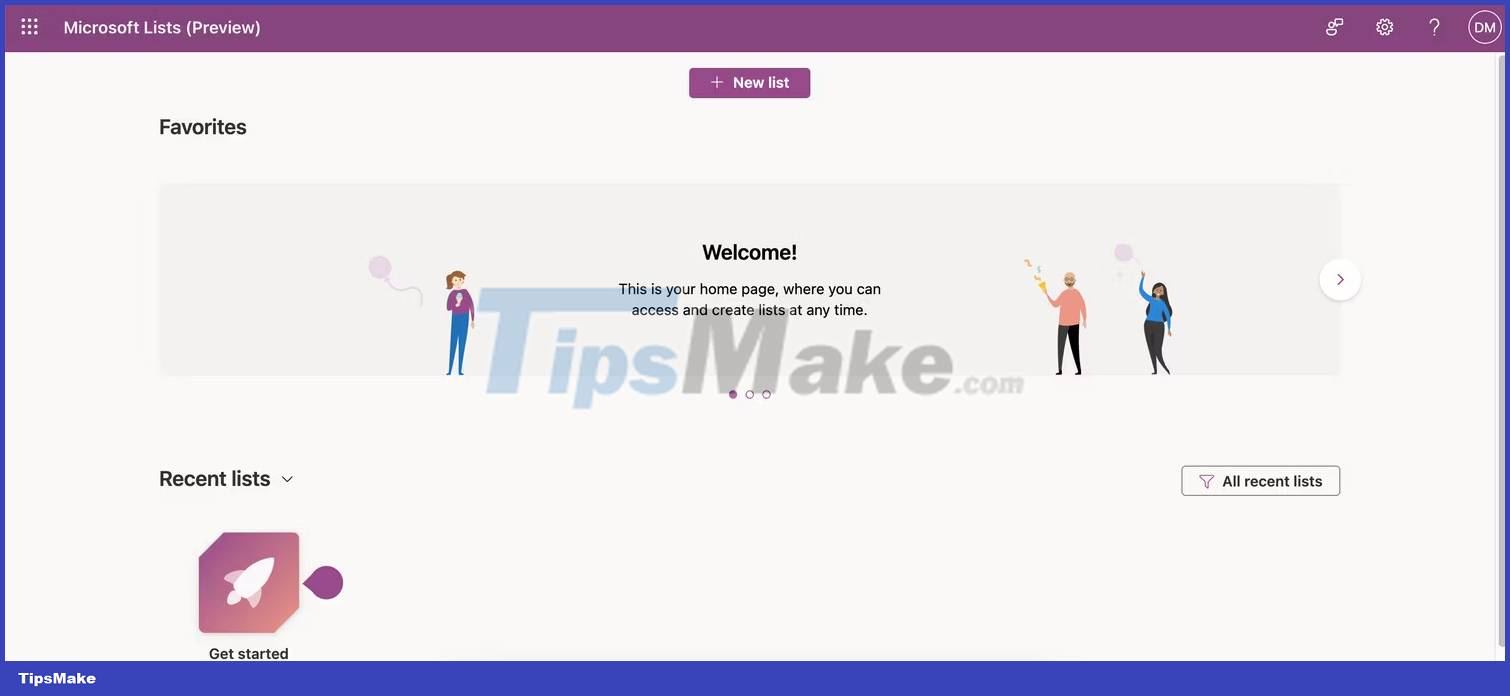
2. Select Blank list or one of the preset settings.
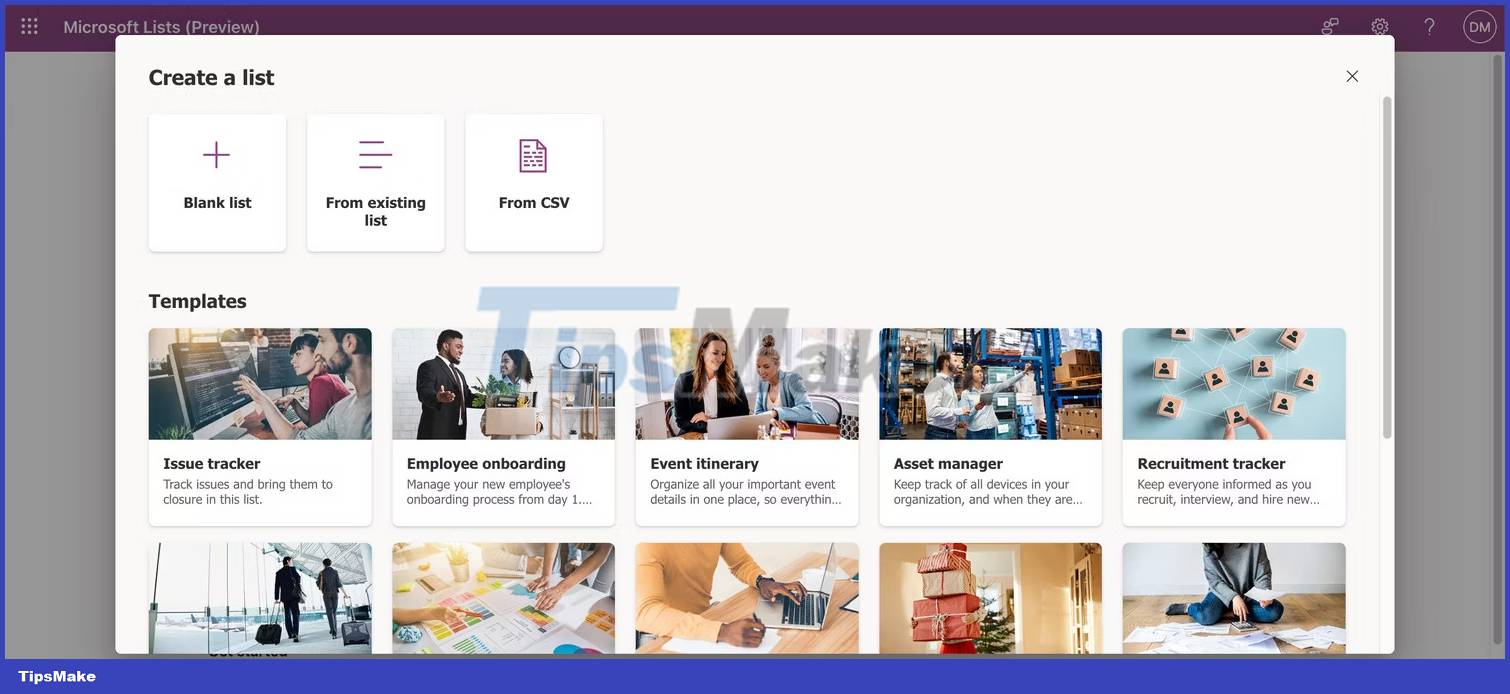
3. Change the name, icon, etc. before tapping Create.
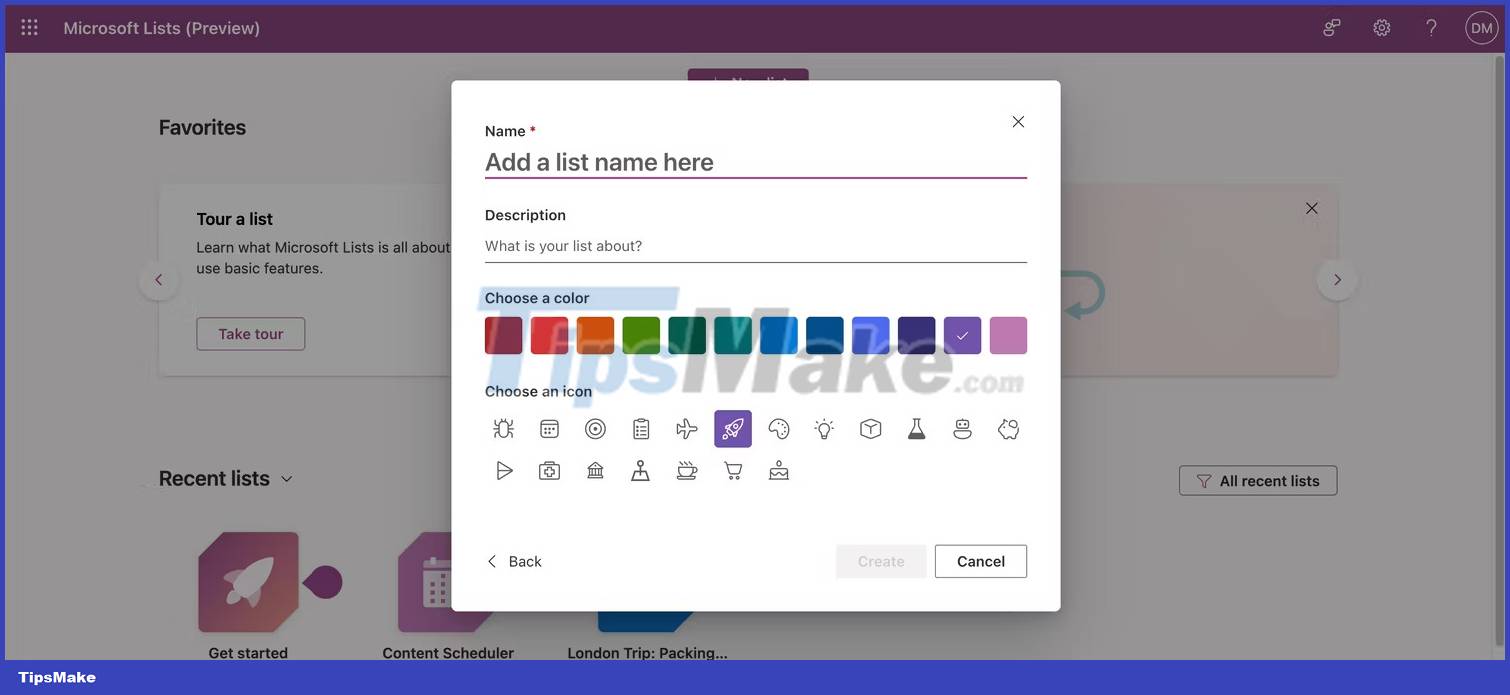
2. Manage rules in the list
You can create rules in Microsoft Lists to notify others when different aspects change. If you give your collaborators permission to edit lists, they can edit list rules. Follow these steps to create a rule:
1. Go to Rules > Create a rule.
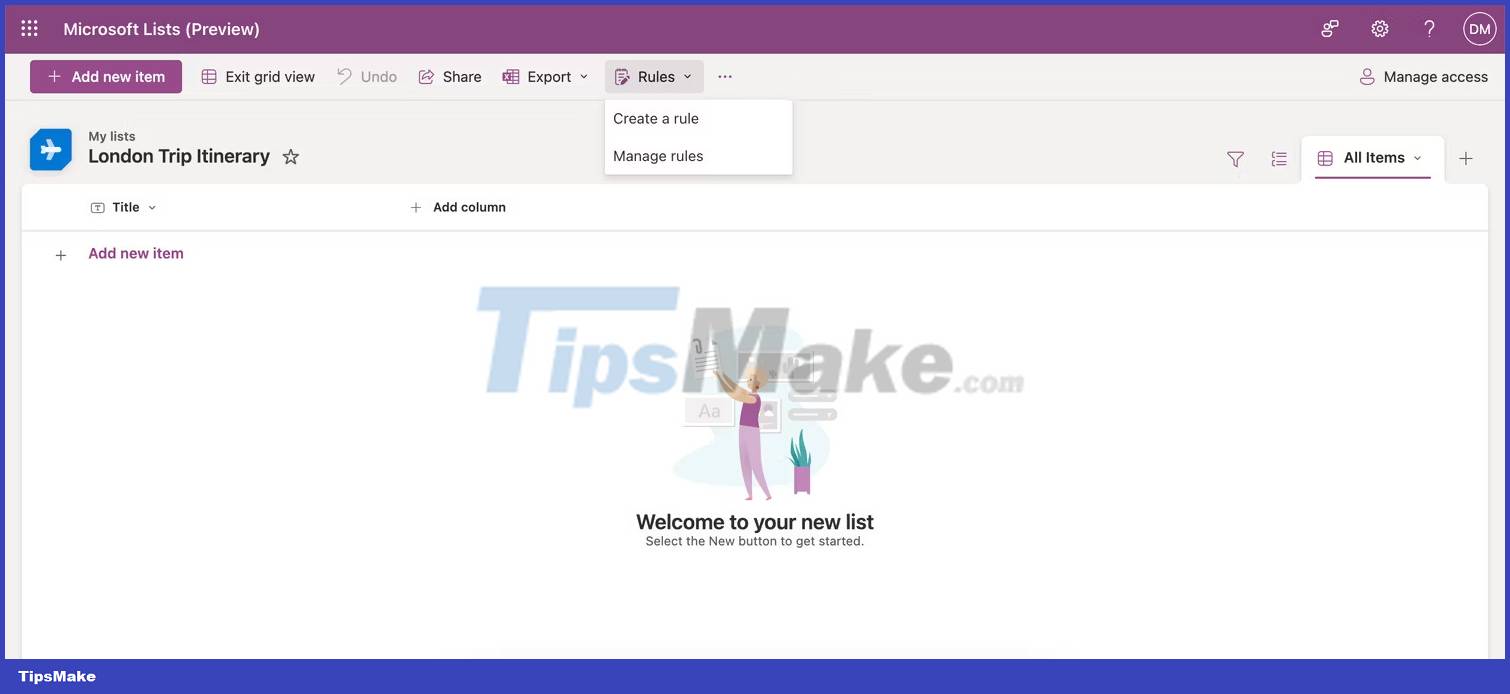
2. Select one of the rules from the available list.
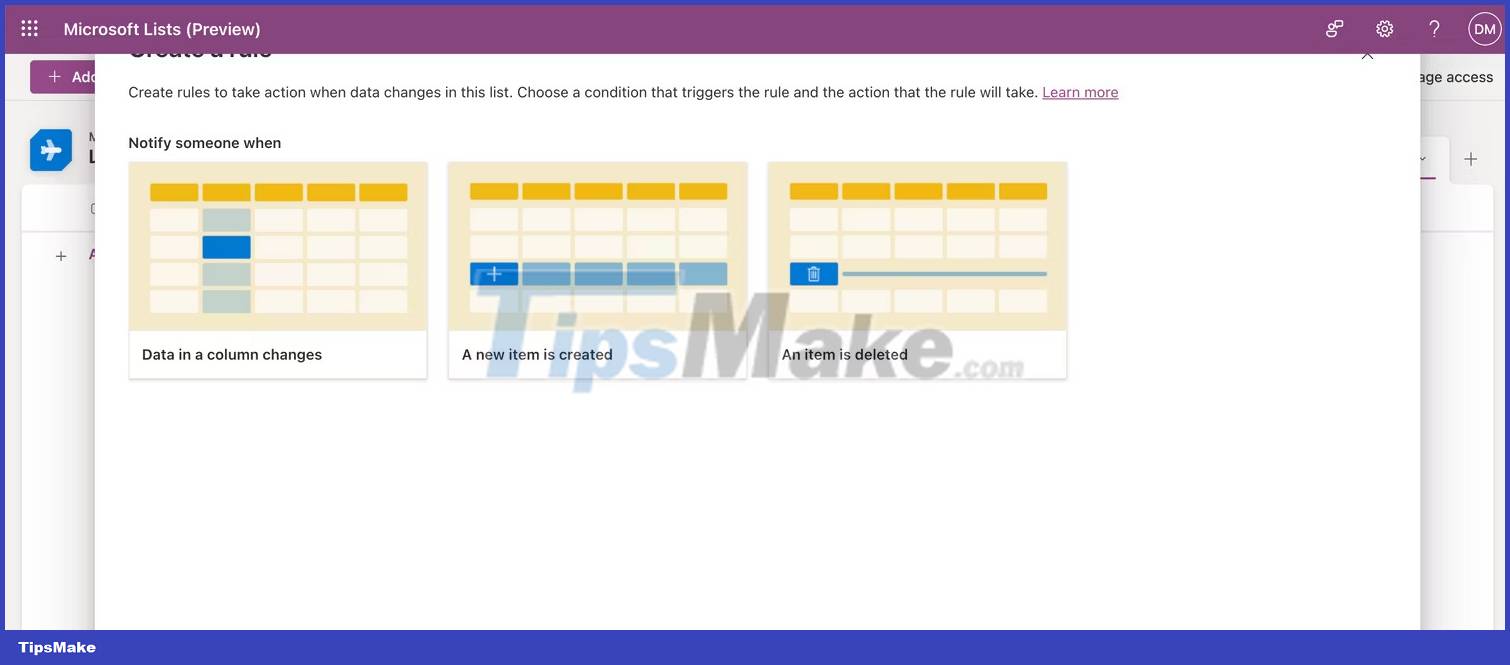
3. Enter the name or email address of the person (or people) you want to notify about changes to your list. Then, click Create in the lower right corner.
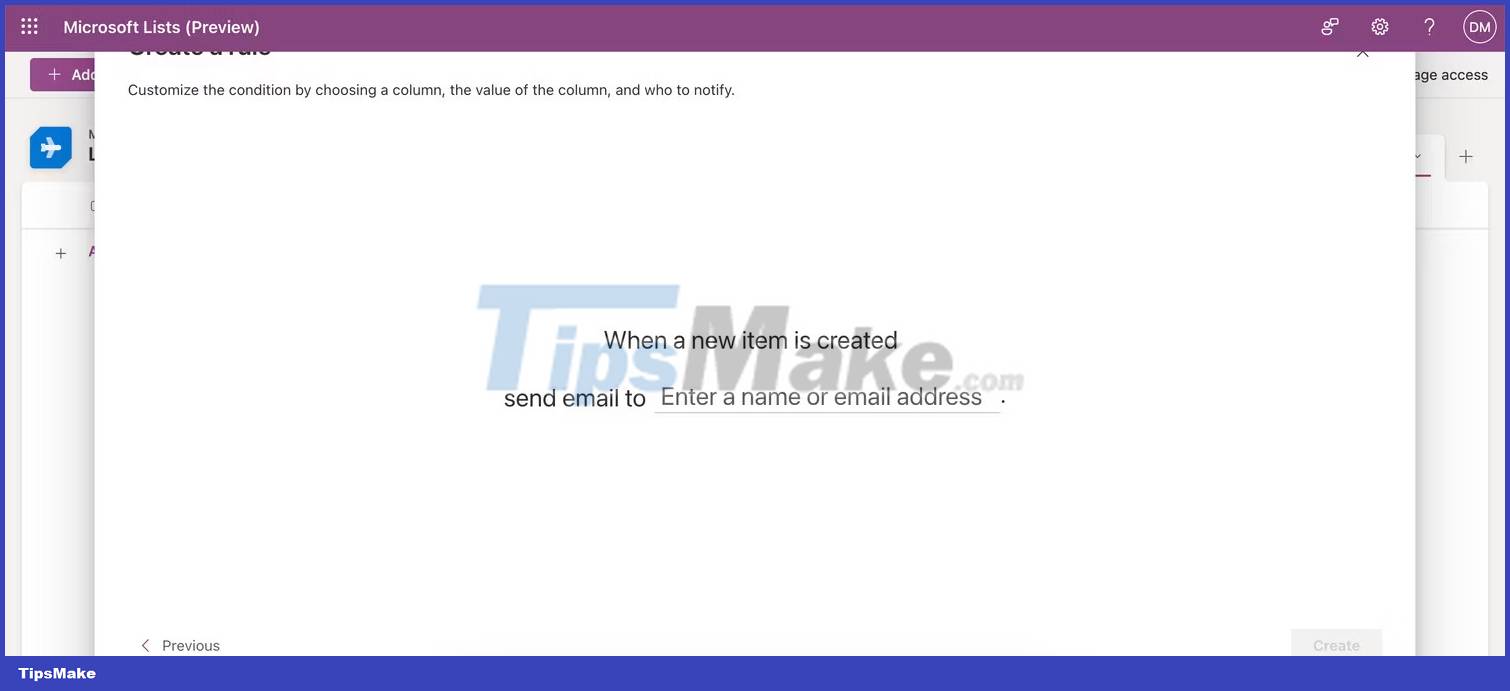
3. Add list items and columns in Microsoft Lists
You can easily add new list items and columns when using Microsoft Lists. First, let's see how to add items to your list:
1. Go to the list you created or add a new list.
2. Select Add new item.

3. Type the text you want to add before pressing the Enter key to add it to the list.
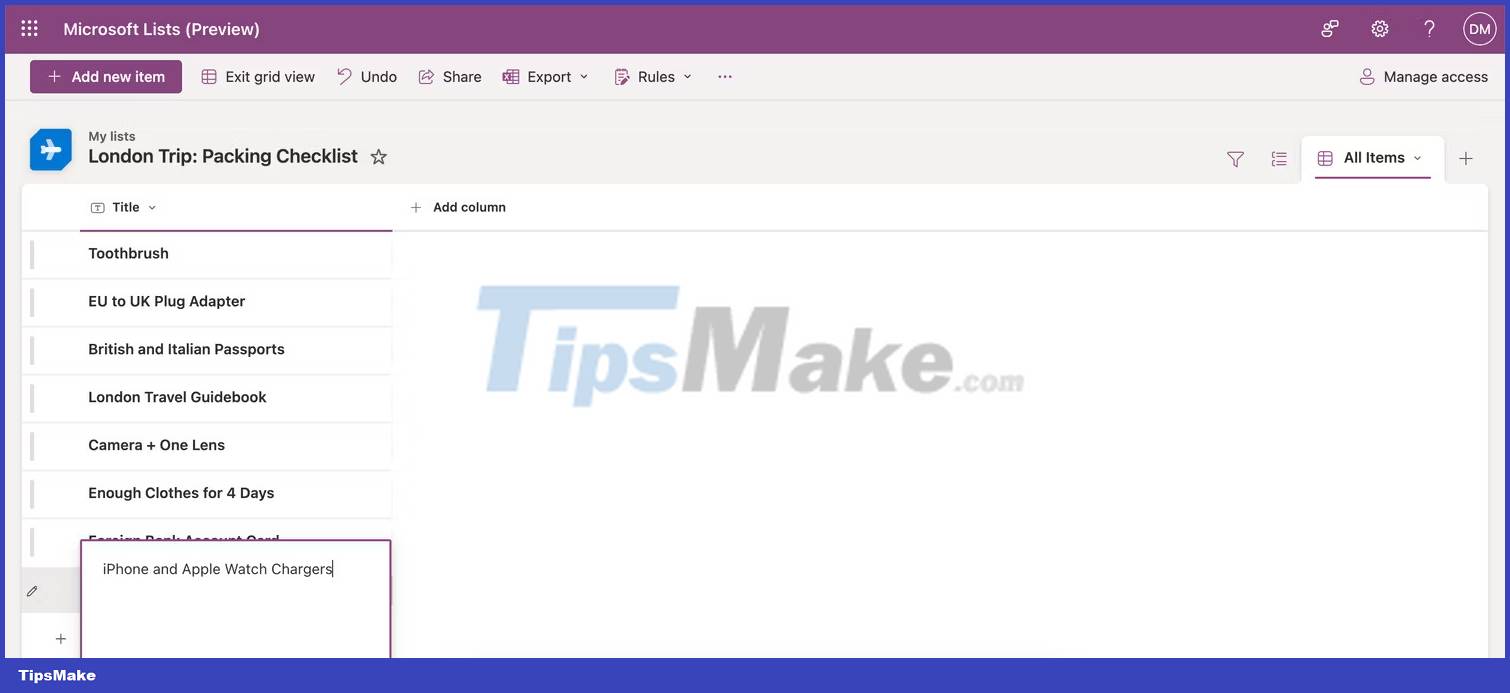
You should add columns if you need to collaborate with multiple people. They are also useful if you want to add different sections to your list in general.
Follow these steps to add columns:
1. Go to Add column.
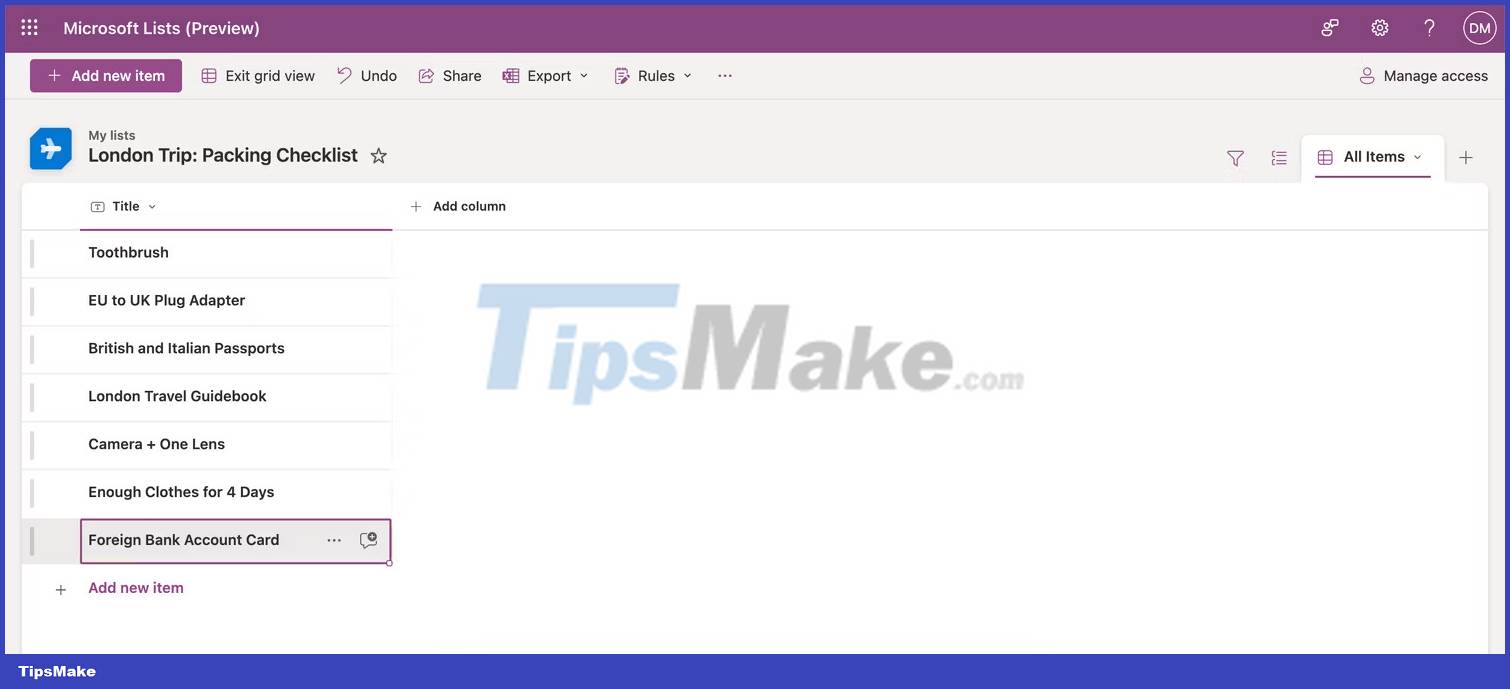
2. Select the type of content you want to include in the column and click Next.
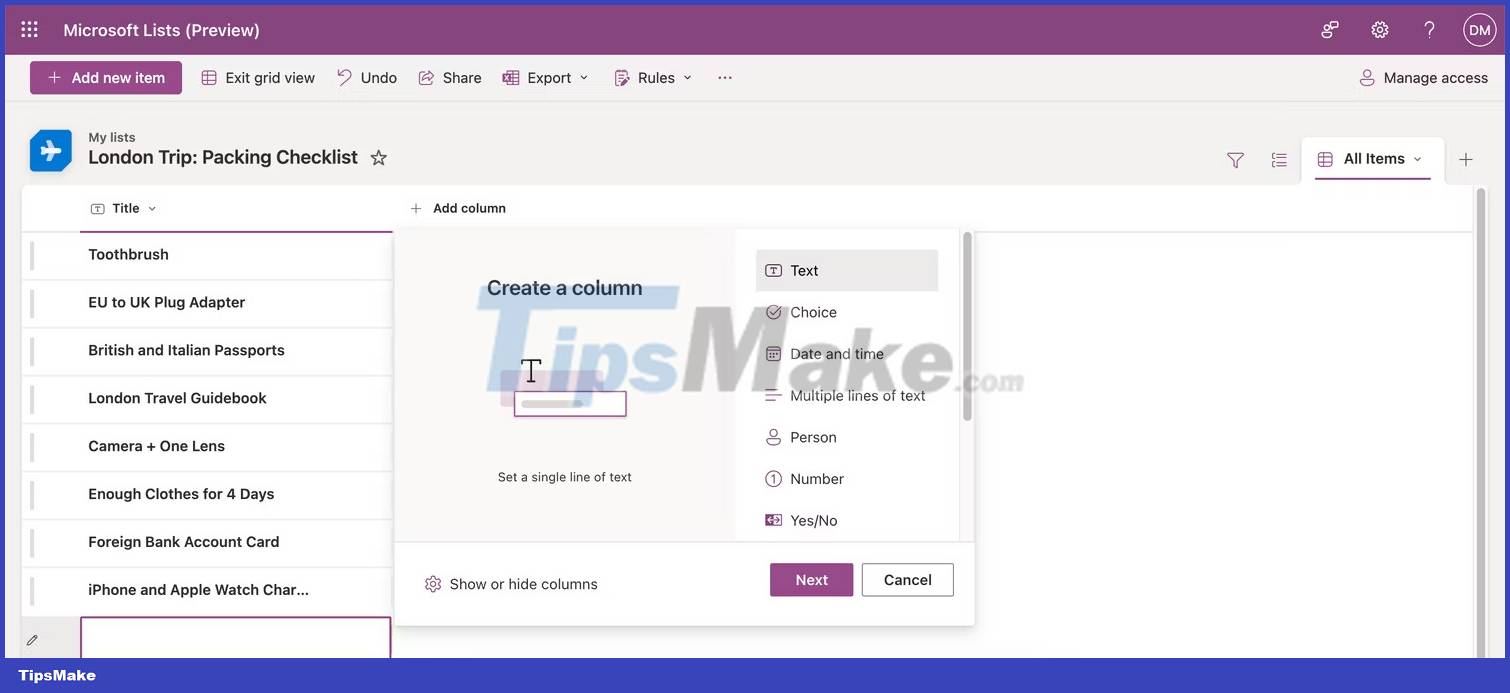
3. Give your new column a name and description. Then, click Save.
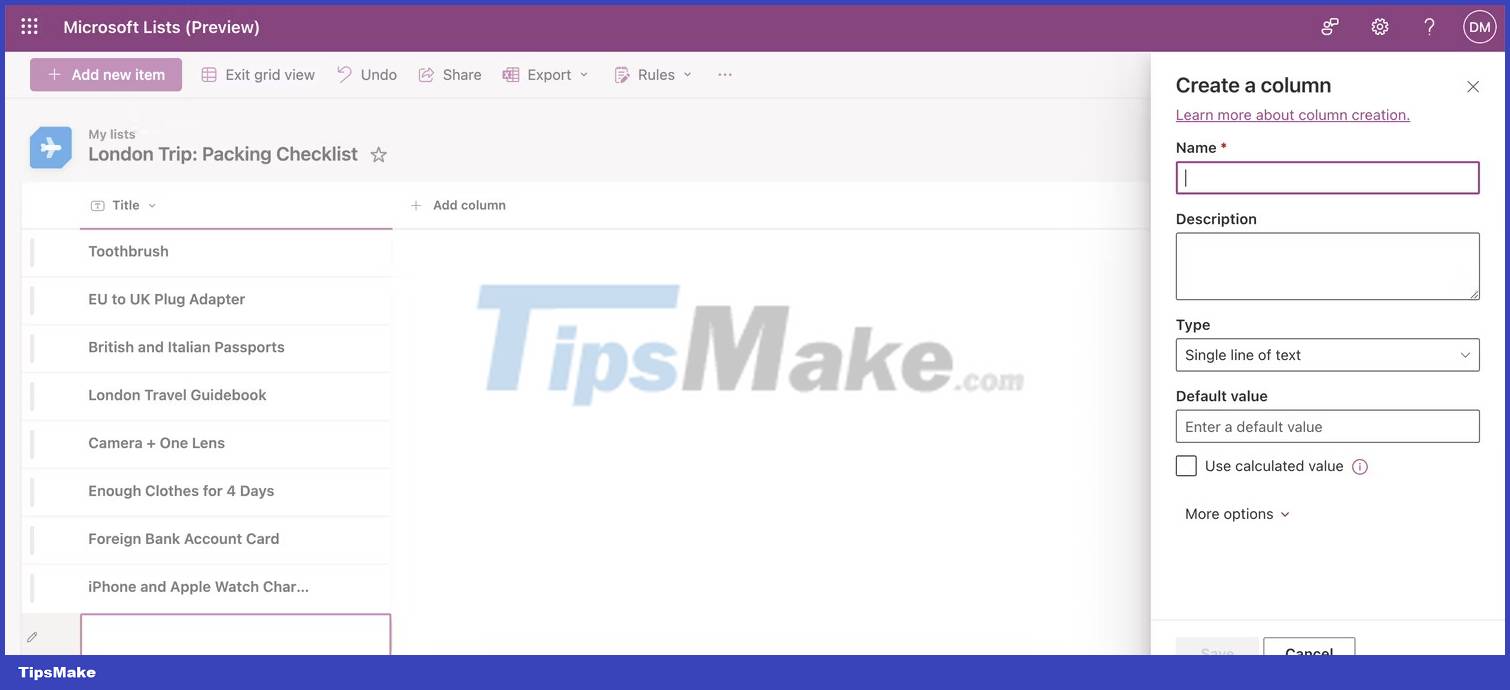
4. How to share your Microsoft Lists with others
Regardless of the reason you need to share your Microsoft Lists with others, it's easy. Follow these instructions to do so:
1. Open the list you want to share with others in Microsoft Lists.
2. Tap the Share icon at the top of your screen.
3. When the next window appears, start by clicking the cog icon next to Copy Link. Here, you can change the permissions you grant to other users.
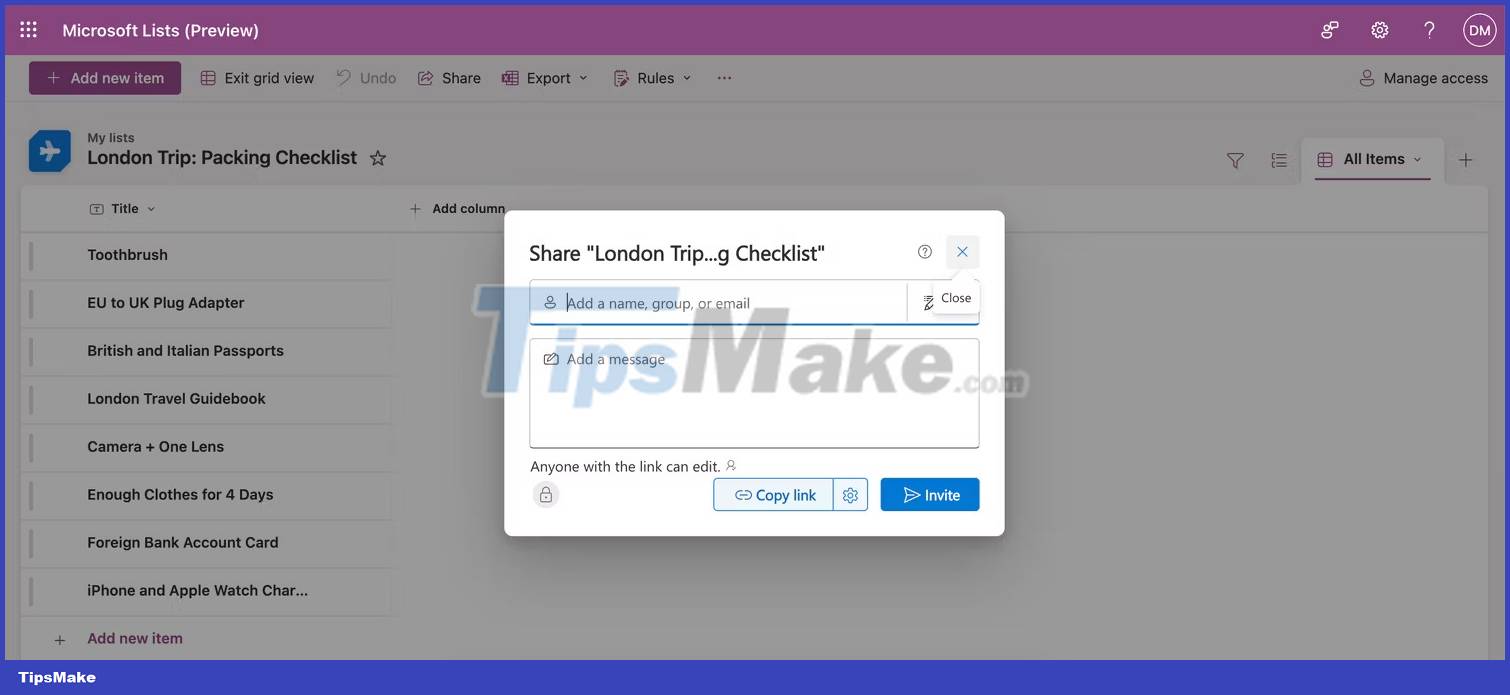
4. Change your permissions and click Apply when you are satisfied with your choice.
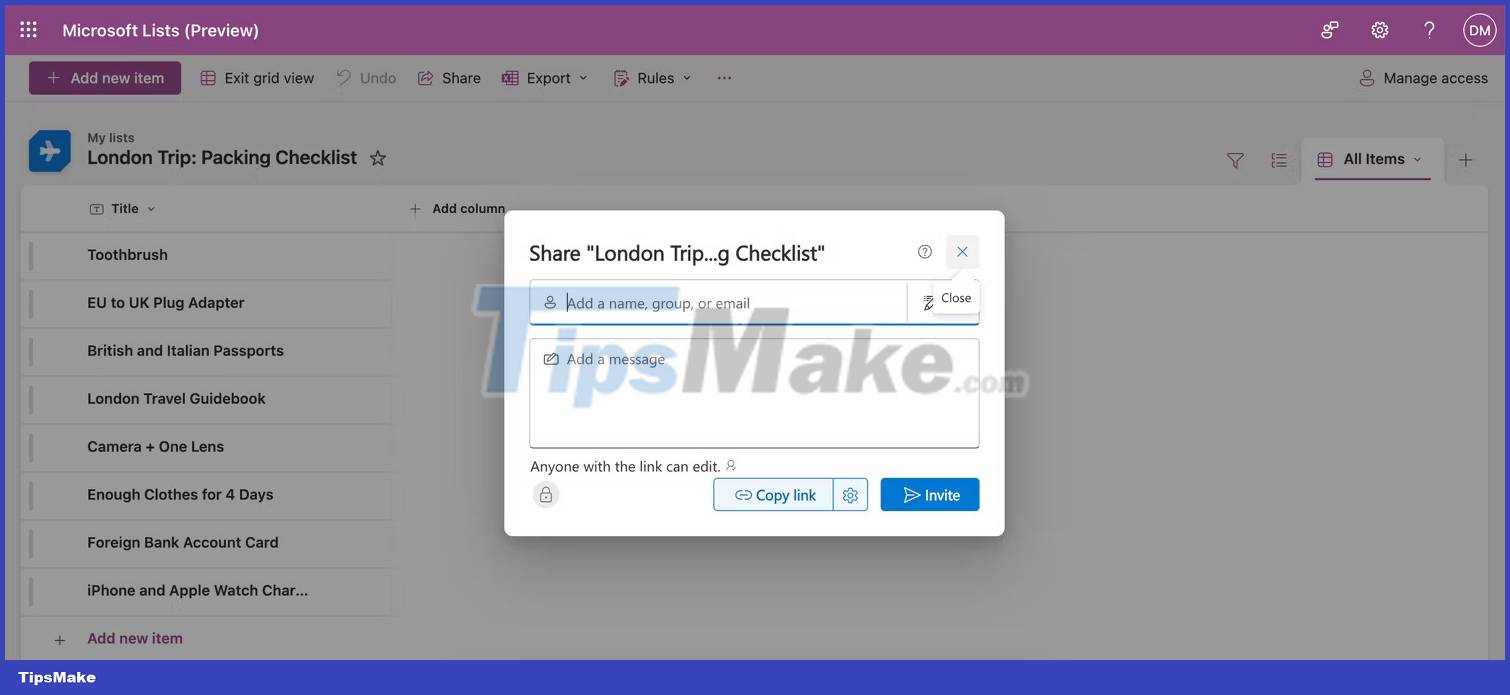
5. When you return to the home screen, enter the names or email addresses of the people you want to invite. Enter a message if you feel necessary and tap Invite when you're ready to share your list.
5. How to use pre-designed templates of Microsoft Lists
You can easily use Microsoft Lists' pre-designed templates for academic or professional purposes. Here's how to do it:
1. Select New list.
2. Select the template you want to work with and select Use template.
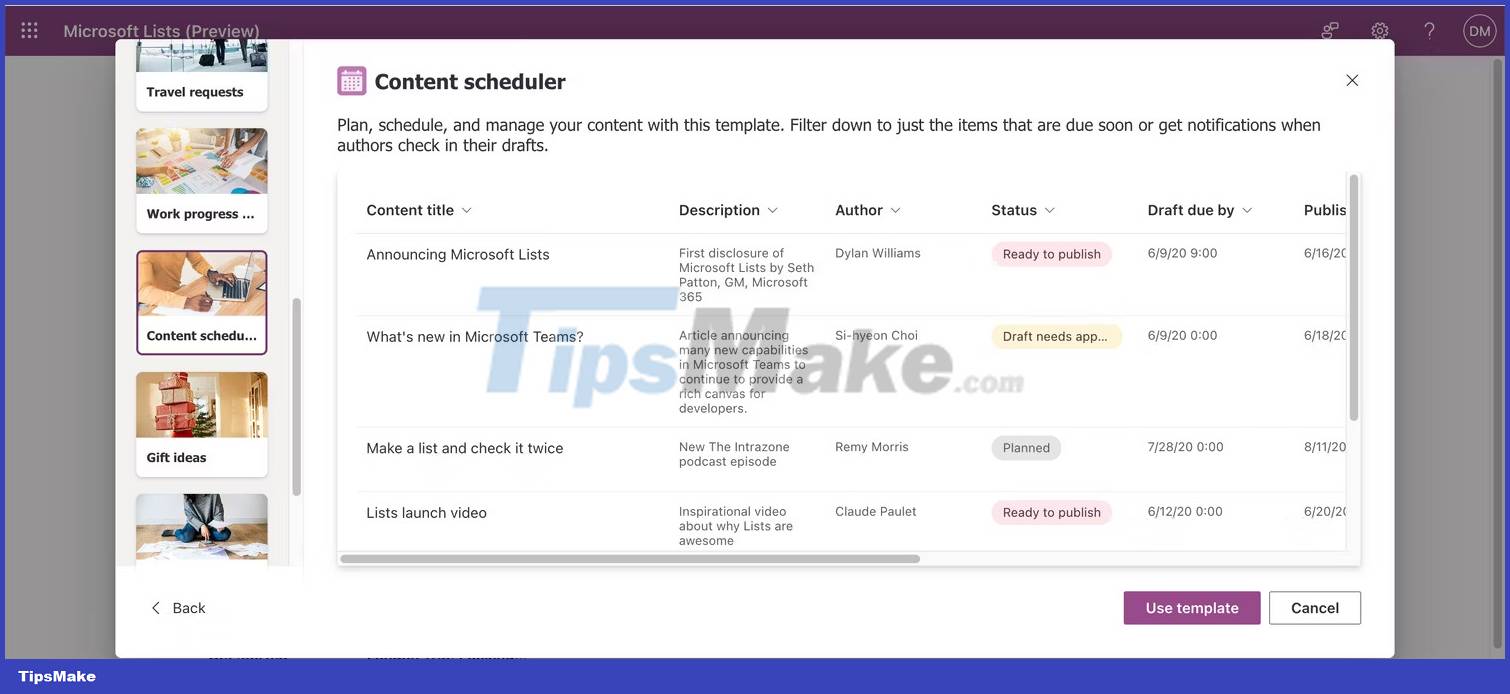
3. Customize the icon, name, etc. of the template before clicking Create.
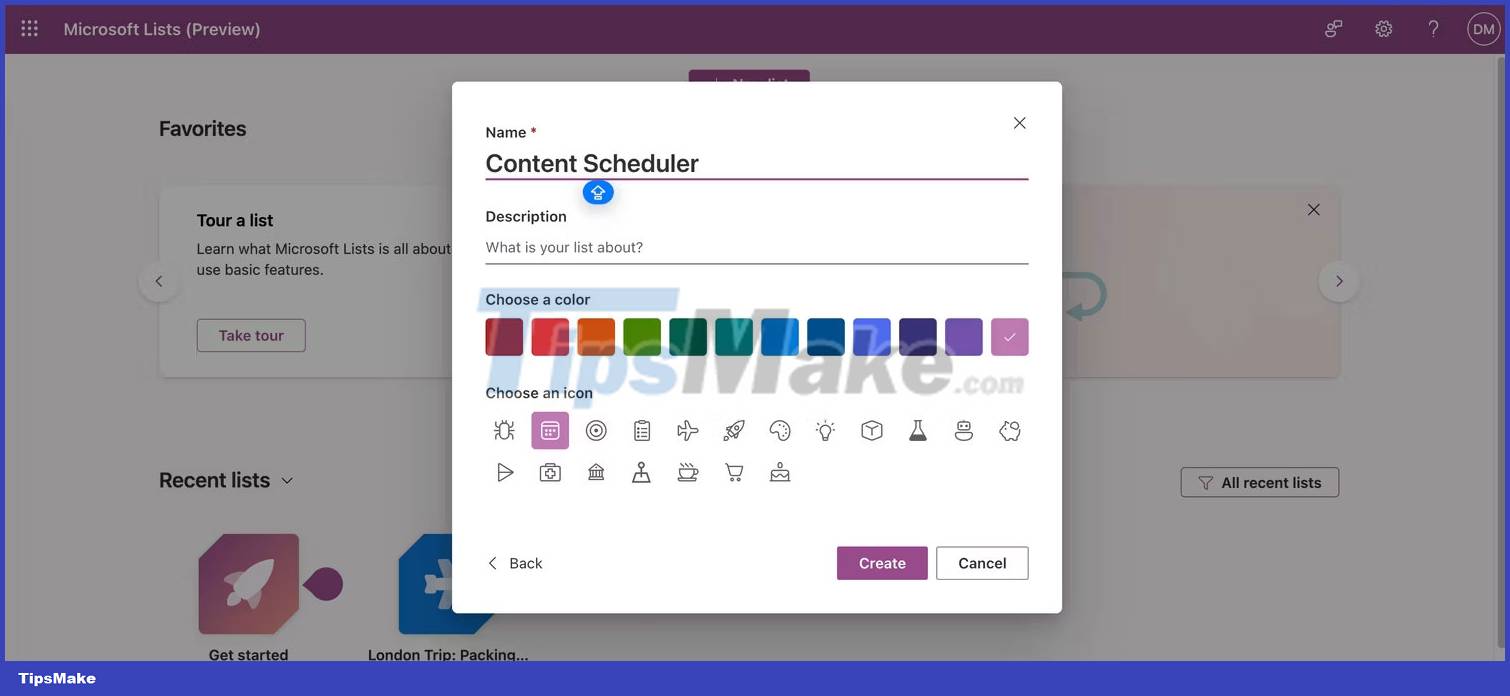
4. Wait for Microsoft Lists to create your template. Once there, fill out the different sections however you want.
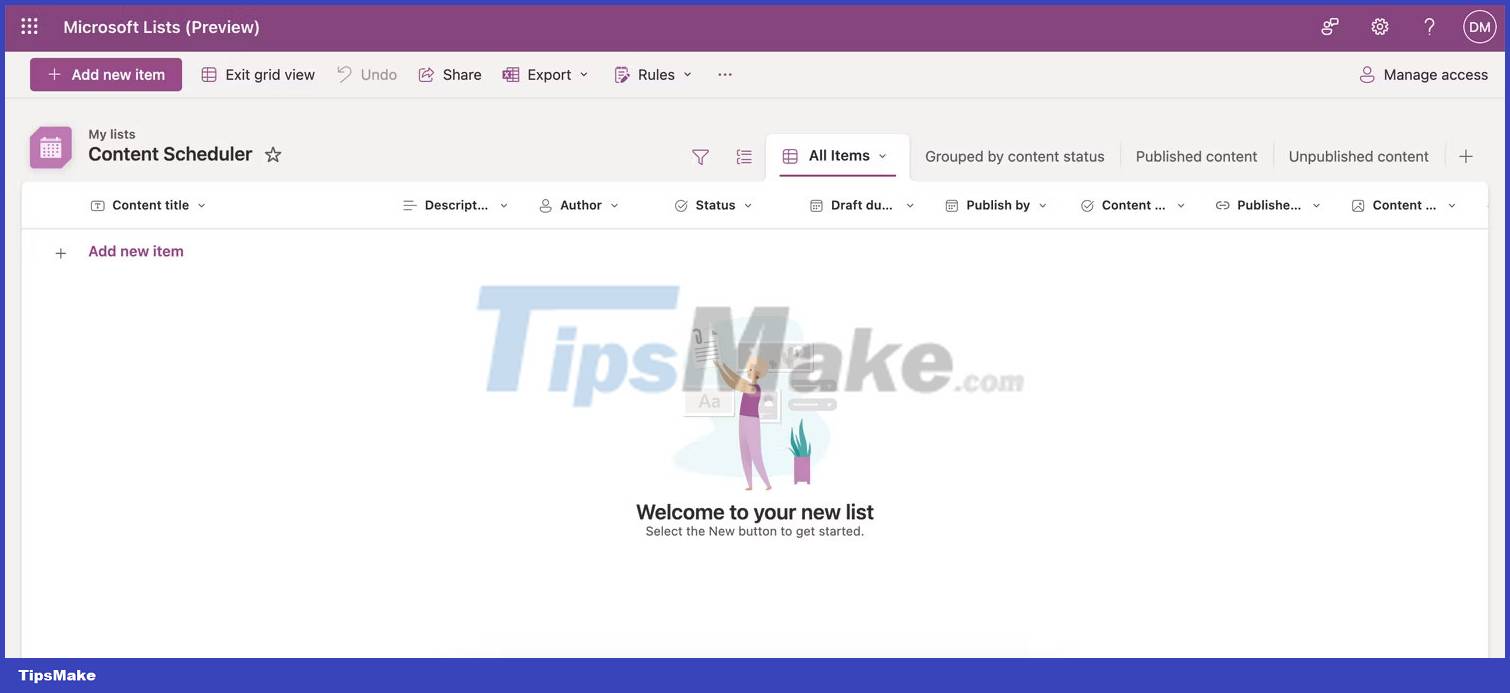
Whether you want to edit your personal lists or share more complex projects with others, Microsoft Lists has plenty of features to use for free. All you need to do is sign in - or sign up for - a Microsoft account. Try this tool and see what you can do with it!
You should read it
- How to Sort Alphabetically in Microsoft Word
- List in CSS
- How to Alphabetize in Microsoft Word
- How to Match Data in Excel
- 6 tips for using OneNote as to-do list
- How to Download PowerPoint
- Instructions on how to create drop down lists or drop-down lists in Excel
- How to reopen previously visited locations in Microsoft Teams
May be interested
- Instructions on how to create drop down lists or drop-down lists in Excel
 the input in excel will take time when you have to type the same content over and over again. this article details how to create a drop down list or a drop-down list in excel.
the input in excel will take time when you have to type the same content over and over again. this article details how to create a drop down list or a drop-down list in excel. - How to reopen previously visited locations in Microsoft Teams
 in microsoft teams there is a dedicated 'access history' list, which lists the 12 most recently visited locations on your teams account.
in microsoft teams there is a dedicated 'access history' list, which lists the 12 most recently visited locations on your teams account. - Microsoft Lists Why TPM, Secure Boot Are Mandatory on Windows 11
 more than three years ago, when microsoft announced windows 11, the operating system immediately caused a lot of controversy.
more than three years ago, when microsoft announced windows 11, the operating system immediately caused a lot of controversy. - Steps to clear Jump Lists history on Windows 10
 jump lists are designed to provide users with quick access to documents and tasks related to the applications installed on the system. you can treat jump lists like a small start menu that includes specific applications
jump lists are designed to provide users with quick access to documents and tasks related to the applications installed on the system. you can treat jump lists like a small start menu that includes specific applications - How to list conditional lists in Excel
 how to list conditional lists in excel. the lookup function is available in excel so that users can search by conditions but return only the first true value. if you need to list all the conditions and copy it to a different data sheet or another sheet ...
how to list conditional lists in excel. the lookup function is available in excel so that users can search by conditions but return only the first true value. if you need to list all the conditions and copy it to a different data sheet or another sheet ... - 5 interesting improvements of Hotmail
 this summer, when microsoft made an update to its e-mail service, several hotmail features would be refreshed and definitely more useful.
this summer, when microsoft made an update to its e-mail service, several hotmail features would be refreshed and definitely more useful. - Top 5 most dangerous viruses in the last 5 years
 virus - one of the most frequently encountered threats for computer users, we may still be living and working daily with them without knowing it. for technical and security experts, they are easy to identify and prevent, but most of the remaining users are often unaware of what is &
virus - one of the most frequently encountered threats for computer users, we may still be living and working daily with them without knowing it. for technical and security experts, they are easy to identify and prevent, but most of the remaining users are often unaware of what is & - How to organize the list in the Reminders app on iPhone and iPad
 in ios 13, apple's reminders app can be used to create reminders for everything. you can also create as many reminder lists as you like to categorize various tasks and projects.
in ios 13, apple's reminders app can be used to create reminders for everything. you can also create as many reminder lists as you like to categorize various tasks and projects. - Microsoft lists many security and privacy features, Teams users should keep in mind
 to ensure a huge user base when using its services, microsoft recently listed a series of security and privacy features that teams users should be aware of.
to ensure a huge user base when using its services, microsoft recently listed a series of security and privacy features that teams users should be aware of. - How to create shopping lists with Google Assistant
 there are many ways to create digital shopping lists that you can bring to a grocery store, but there is no more convenient way to use voice commands with an android phone or a google home device.
there are many ways to create digital shopping lists that you can bring to a grocery store, but there is no more convenient way to use voice commands with an android phone or a google home device.










 8 best alternatives to Google Play Store to download Android apps
8 best alternatives to Google Play Store to download Android apps How to copy and paste on Chromebook
How to copy and paste on Chromebook How to write notes in Google Search
How to write notes in Google Search How to download Spotify songs to listen offline
How to download Spotify songs to listen offline How to use Copilot in PowerPoint
How to use Copilot in PowerPoint How to navigate folders in Windows Command Prompt
How to navigate folders in Windows Command Prompt